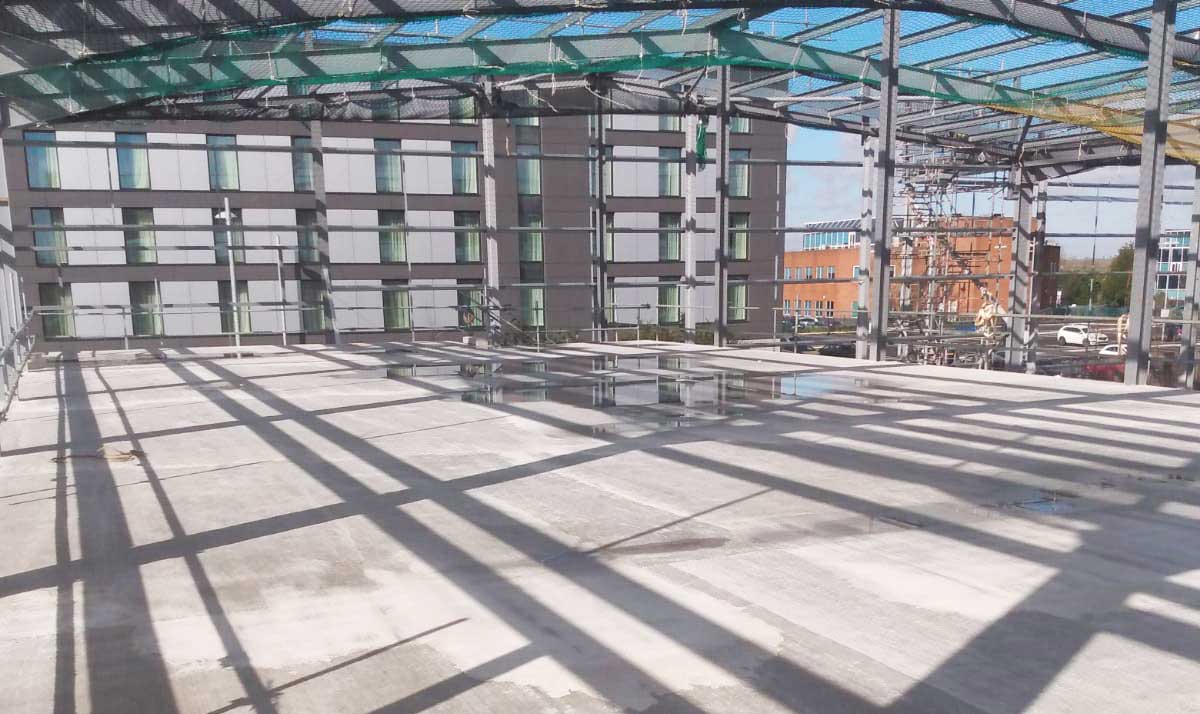The Advantages of Using Composites in Building Materials
The Advantages of Using Composites in Building Materials
Blog Article
Opening the Environmental Advantages of Recycled Compounds in Building and Layout
In the realm of construction and layout, the utilization of recycled compounds holds significant assurance for improving sustainability techniques and minimizing environmental impact. The change in the direction of a more sustainable future in these industries pivots on unlocking the full potential of recycled compounds.

Environmental Influence Reduction
The decrease of ecological influence via using recycled composites in building and construction and layout plays a crucial duty in lasting methods. By including recycled composites right into structure products, the building and construction sector can dramatically decrease its carbon impact and add to an extra environmentally friendly future. These lasting products, made from repurposed plastics, wood fibers, or various other recycled elements, use a feasible option to typical building products without endangering on high quality or sturdiness.
Recycled composites aid divert waste from landfills and minimize the demand for removing resources, thus conserving all-natural sources. In addition, the production process of these composites usually eats much less energy and emits fewer greenhouse gases compared to creating virgin materials (composites). This change towards using recycled composites not just decreases environmental harm however likewise advertises a circular economic climate by urging the reuse of products that would or else be disposed of
Waste Minimization
With an emphasis on lessening waste in construction and style, the integration of recycled compounds supplies a sustainable service to lower environmental impact. Waste reduction is an essential element of sustainable techniques, and using recycled composites presents an opportunity to accomplish this objective effectively. By using materials that have currently offered their preliminary purpose, such as recycled plastics or reclaimed timber fibers, the construction and style industries can dramatically minimize the amount of waste created and sent out to landfills.
Recycled composites have the potential to divert substantial quantities of waste from conventional disposal techniques, adding to a much more round economic situation where sources are made use of efficiently. Additionally, the manufacturing procedure of recycled compounds usually consumes much less power and generates less discharges compared to virgin materials, even more decreasing the ecological footprint of building and style jobs.
Carrying out waste minimization methods via the unification of recycled compounds not only assists in saving natural deposits however likewise promotes an extra lasting approach to structure and making for a greener future.
Power Preservation
Integrating recycled composites not only lessens waste in building and construction and layout yet also plays a vital duty in boosting power preservation techniques within the sector. Using recycled compounds in building and construction can significantly add to power preservation through different ways. First of all, the production of virgin materials commonly calls for significant energy inputs, whereas using recycled compounds eats less energy, therefore reducing total energy consumption. Furthermore, incorporating recycled compounds can contribute to far better insulation buildings in structures, decreasing the need for excessive heating or air conditioning, and subsequently reducing power use for environment control. learn the facts here now The lightweight nature of numerous recycled compounds can lead to lighter frameworks, requiring less energy for transport and installment. By advertising making use of recycled composites in building and construction and layout, the industry can make significant strides towards attaining power efficiency and decreasing its carbon impact, ultimately adding to a more sustainable developed atmosphere.
Carbon Impact Reduction
Enhancing sustainability methods with the utilization of recycled composites in construction and layout considerably decreases the carbon footprint of the industry. By incorporating recycled products right into the production of composites, the need for virgin sources lowers, causing lower power intake and greenhouse gas exhausts connected with standard production procedures. This decrease in carbon impact is important in combating climate adjustment and advertising a much more environmentally pleasant method to building and design.
In addition, the usage of recycled compounds also helps in diverting waste from landfills, thereby reducing the environmental impact of disposal and advertising a round economic climate. The carbon footprint decrease attained with the adoption of recycled composites lines up with the international press in the direction of sustainable methods and the decrease of commercial emissions. It showcases a commitment to responsible source management and a shift towards greener choices in the building and construction and design industries. Inevitably, by focusing on the integration of recycled composites, the sector can make significant strides in reducing its carbon impact and read this contributing to an extra lasting future.
Lasting Future
The assimilation of recycled compounds in building and style not just addresses immediate environmental problems however additionally lays a strong foundation for a lasting future in the market. By incorporating recycled compounds right into structure materials and items, the building and layout industries can considerably lower their dependence on virgin sources, causing a more round economic situation. This shift in the direction of sustainability is important for mitigating the environmental influence of conventional building and construction methods, which often lead to high degrees of waste generation and resource deficiency.

Verdict
Finally, recycled composites use significant ecological benefits in building and construction and style by decreasing ecological impact, lessening waste, saving power, decreasing carbon footprint, and promoting a lasting future. Welcoming using recycled compounds can add to a much more environmentally-friendly method to structure and design, eventually bring about an extra sustainable and greener future for all.
The decrease of environmental impact through the use of recycled compounds in construction and design plays an important function in sustainable techniques.With a focus on lessening waste in building and construction and design, the combination of recycled composites uses a lasting remedy to minimize environmental effect. By promoting the usage of recycled compounds in building and construction and style, the industry can make considerable strides towards attaining energy performance and minimizing its carbon footprint, eventually contributing to an extra sustainable constructed environment.

Report this page